Origins are not the only ways of understanding places. If one reading of a place is through histories made, then another is through histories that are in the making. This essay traces the evolutions of three towns in Tunisia, Africa, and how their respective trajectories have resulted in three distinct identities all related to tourism and leisure. Taken together, they reveal the dilemmas surrounding the perception of places as ‘historic’ (stemming from memories of its past), versus the experience of places as ‘living heritage’ (stemming from linkages between its past and present). Here we will discuss how and why places with deep histories change through their successive reception, even as numerous deep-rooted characteristics retain their original guises and appeal.
Carthage: From Ancient Town to Revered Ruin
The ancient site of Carthage is located on the edge of North Africa that is now Tunisia, on the eastern side of Lake Tunis. From this prime location, Carthage could control trade from the eastern Mediterranean (i.e., Turkey, Greece, Egypt) to the Western Mediterranean (i.e., Italy, Spain), making it ancient Rome’s biggest threat and rival. With its fertile agricultural land, Carthage was colonized by the Phoenicians of modern-day Lebanon in about 800 BCE, and eventually became an independent power by the sixth century BCE. Upon getting its independence, the city became a commercial oligarchy with an estimated population of about 400,000 that monopolised maritime trade along the entire North African coast from the Atlantic Ocean to the western coast of Egypt, as well as the Balearic Islands of Sardinia, Malta and Sicily. The defeat of Carthage by the Romans at the Third Punic War made Carthage a Roman province. Under Roman control, Carthage had a rectangular town-plan like that of Pompeii and Naples and included a circus, Amphitheatre, theatre, thermal baths, harbors, churches and a network of villas – some of which still exist today as ancient ruins.
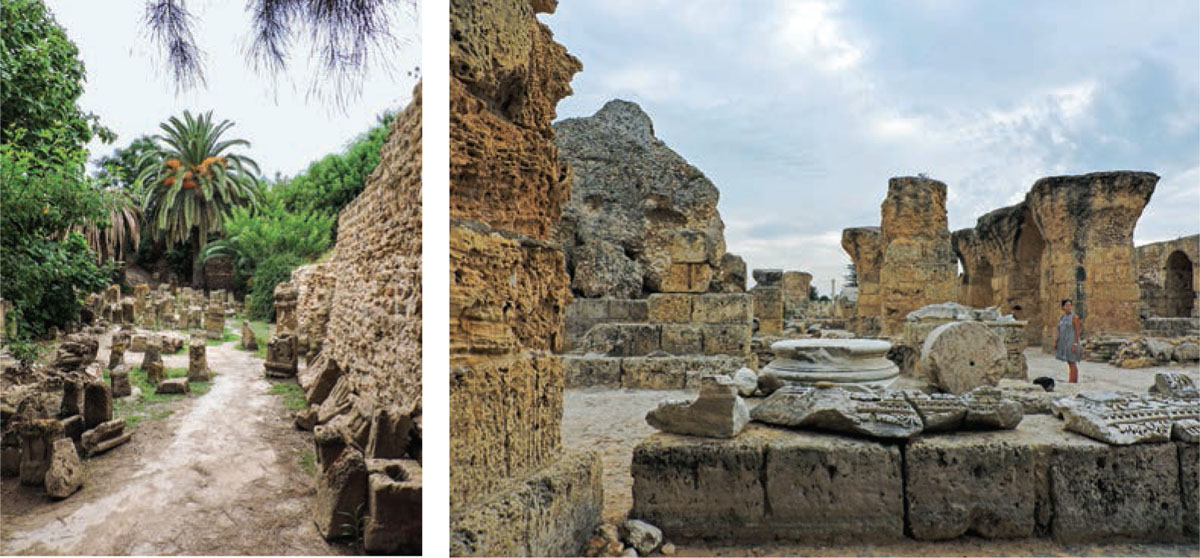
Right: What was once the thermal baths for the ancient Romans has now become a playground for visitors to wander around
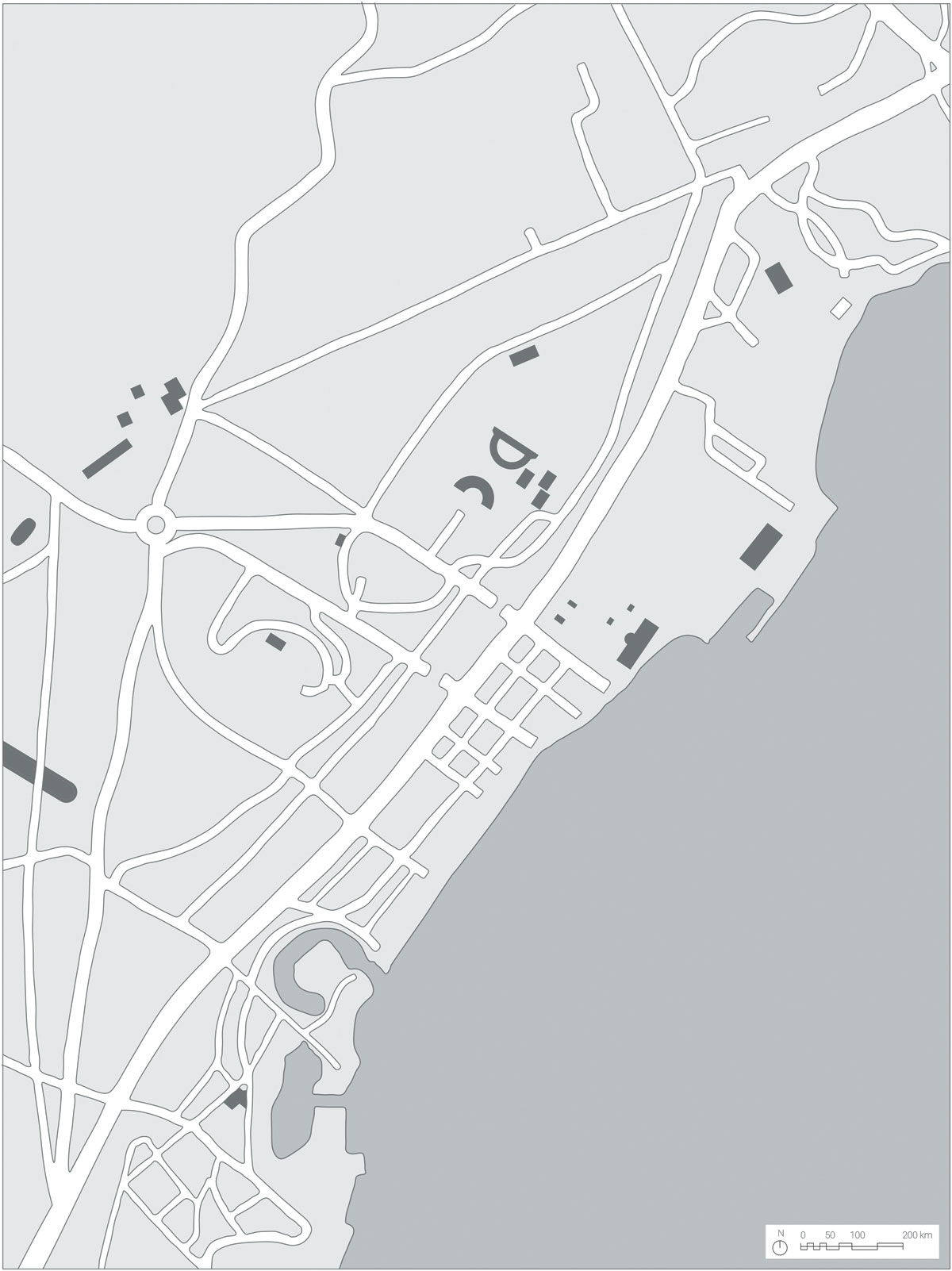
During the first half of the 20th century, urban sprawl spreading out of Tunis gradually reduced the ancient site of Carthage to a handful of ruins scattered throughout the town. Yet, the increasing awareness of Carthage’s rich history as a Punic town and Roman province has made this suburb of Tunis a desirable place to live for ambassadors, diplomats and foreign journalists. The presence of expats and wealthy Tunisians has attracted intellectuals and creative minds to transform Carthage into a diverse, sophisticated town. While this evolution has led to the inevitable construction of many modern homes, traces of the ancient town still exist.
The Antonine Baths and Byrsa Hill have only a simple gate to protect the ruins and while some of the ruins are visible from the outside, they both require a ticket to enter. Ruins of several villas are scattered throughout Carthage, exist among the modern houses of Carthage and, although also gated off, can be seen by tourists and residents alike.
The port that once held more than 200 ships is now a public park, the cisterns exist without any gate and can be viewed in their entirety and the Amphitheatre is now a performance venue for concerts and festivals such as the annual Carthage Music Festival.
Mosaics and pieces of columns and pottery from the Roman period can sometimes be found in the sand as small reminders of its ancient history. The Antonine Baths are the main tourist attraction of Carthage, although only the underground floors of the baths remain, visitors can still see the mosaics that decorated the floors and many of the original columns that once held up the large complex. The very fine boundary between the ruins and the more recent buildings and the amount of preserved ruins throughout the town create an interesting relationship between the old and new and serve as constant reminders of the history of Carthage.

Tunis Medina: From Medieval Hub to Resurrected Heritage
While Carthage was founded on the coast by the Phoenicians, the Medina of Tunis was constructed inland on the opposite side of Lake Tunis by the Arab-Muslims who brought with them the religion of Islam, the Arabic language and Arab culture. The Tunis Medina was the medieval, old Arab town out of which the rest of the capital of Tunisia grew. Established around 698 CE as a navy outpost for troops preparing for coastal enemy encounters, the Medina was the center of Tunis and eventually the business center of the city (McGuinness, 1992).
Although Tunisia has seen the settlement and influence of many groups of people — the Phoenicians, the Romans, the Arabs, and the subsequent arrival of the Ottomans and the French — the arrival of the Arab-Muslims influenced the country the most and moulded it into the Arab country it is today. While the Medina was the business hub of Tunis with the souks (markets) that threaded the town, it started losing its centrality within the city of Tunis with the arrival of the French in 1881. The arrival of the French and the subsequent construction of new buildings moved the center of the city right outside the walls of the Medina into the French colonial Ville Nouvelle (new city) known as Tunis Centre.
Today, the Medina of Tunis behaves less as the business center of the city and more as the soul of the city and a tourist attraction. Tourists go to the Tunis Medina mainly to explore the souks, now mostly filled with souvenirs and clothes, the shisha cafes and the preserved palaces from the Ottoman period. As with any medina, walls surround the Medina of Tunis to separate it from the Ville Nouvelle. The old city gate, known as Bab Al-Bahr (translated into sea gate), marks the end of Avenue Habib Bourguiba — an obvious French influence and the main avenue of Tunis — and the beginning of the Medina. Despite the dissolution of the Medina walls, the contrast between the European Ville Nouvelle and the old Medina is apparent merely by walking up Avenue Habib Bourguiba and approaching Bab Al-Bahr. The Ville Nouvelle is quite evidently the morphological antithesis to the Medina: while the European buildings that characterize the Ville Nouvelle face outward, multistoried apartments with windows and balconies overlooking the wide avenues of Tunis face inward to create individual courtyards for each home. The Medina forms a honeycomb fabric whose separation between residences is apparent only by looking at each residence’s courtyard from above.
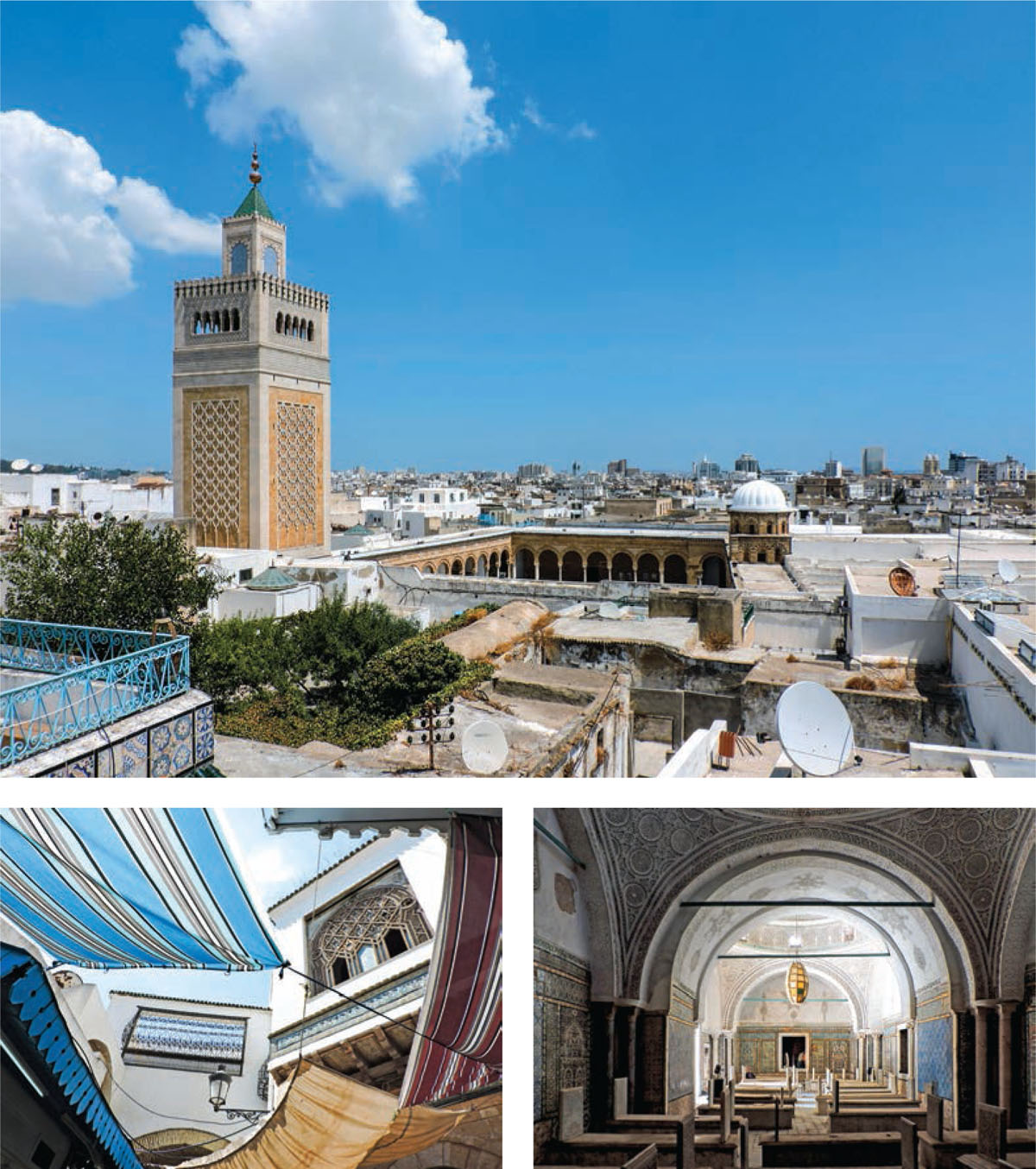
Bottom Left: The mashrabiyas and ironwork of the windows, awnings of the souks and draped pieces of fabric combine to expose the richness and complexities of the Medina
Bottom Right: Tourbet El Bey is a mausoleum that houses the tombs of the Husseinite Beys, the Ottoman group who ruled Tunisia from 1705 to 1957
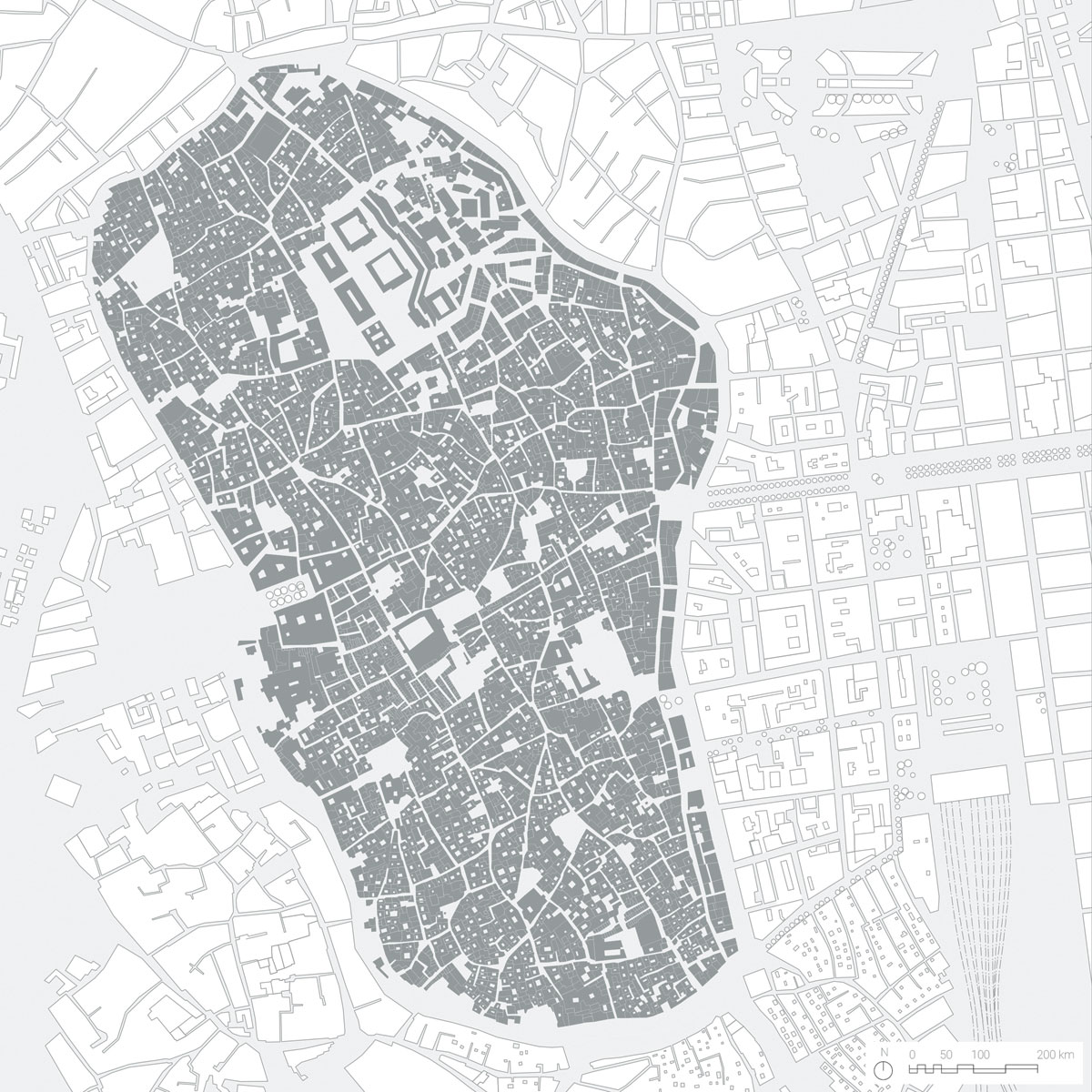
The relocation of the business activities into the Ville Nouvelle in the 1960s brought over many immigrants and people from the rural areas of Tunisia into the Medina. Because these new groups were unfamiliar with the urban life of the Medina, the area became mistreated and its buildings abused. ASM Tunis (Association de la Sauvegard du Medina, or the Association for the Safeguarding of the Medina) is a group founded in 1967 as a response to the deterioration of the Medina and seeks to preserve and enhance the Medina by protecting its traditional urban environments, historic monuments and any objects that are a part of the cultural heritage of the Medina.
This effort to preserve the Medina has seen quite a bit of attention from the West since the 20th century upon the Aga Khan Award’s recognition of the Hafsia I and II projects, both spearheaded by ASM Tunis.
While the organization has worked on several projects throughout the Medina as urban conservation specialists, not enough has been done to clean up the Medina and improve its public spaces. Political instability has made conserving the Medina less of a priority. The temporary declining of the economy brought on by the Revolution saw a decrease of living costs within the Medina. These cheaper living costs have attracted younger Tunisians and this influx has resulted in gentrification as well as a simultaneous newfound appreciation of the Medina’s history and personality. Libraries and cultural centers have recently been created. Public art projects have been erupting in the Medina’s plazas. Old villas and palaces from the Ottoman period have been renovated and street art and music festivals have been receiving increasing attention from locals and foreigners.
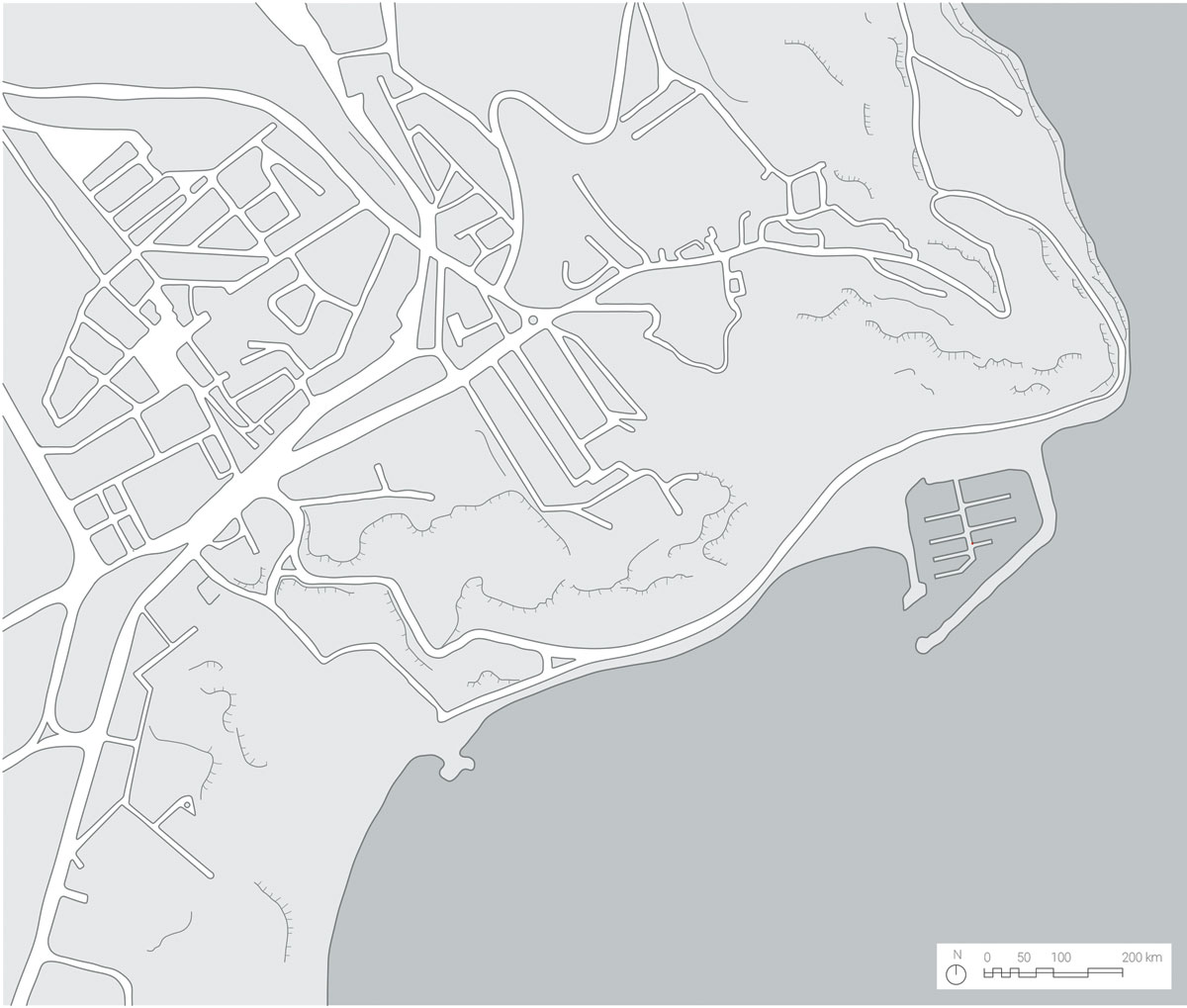
Sidi Bou Saïd: From Artist Enclave to Elite Resort
The town of Sidi Bou Saïd sits on a hill north of Tunis overlooking the Bay of Carthage. Like Carthage, it is a suburb of Tunis and was once a resort town for those who lived in the city. It was founded as a sanctuary for the Sufic leader Abou Said Al Baji in the 13th century, a place where he could teach his ascetic doctrine and also promote through his center intellectual discourse on poetry and music (‘Sidi Bou Saïd village, Tunisia,’ Atilla Yücel, Ekistics, 117). The village was known as the temporary home for European painters such as Paul Klee and August Macke and philosophers such as Michel Foucault, all of whom found inspiration in the architecture, landscape and exoticism of Sidi Bou Saïd as the quintessential seaside village, perfect artist’s enclave and intellection enclave.
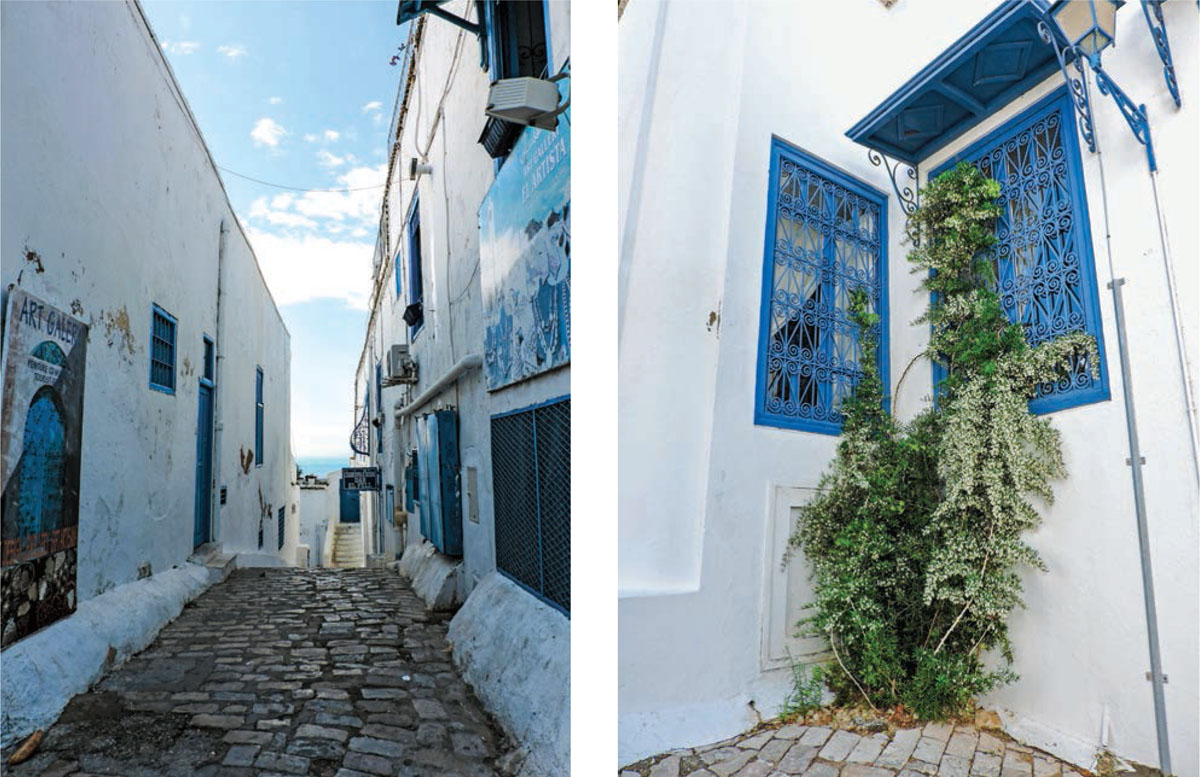
Sidi Bou Saïd’s ideal location and picturesque quality has led to the inevitable growth of tourism. The town is no longer a summer resort village, but rather a tourist destination and residential area of Tunis for upper-class Tunisian families, ambassadors, intellectuals and artists. Although varying in size and shape, Sidi Bou Saïd’s buildings are easily recognizable with their whitewashed houses, blue doors, mashrabiyas and topped with domes and vaults.
Today, it is typical for large, old houses to be converted into small museums, boutique hotels, galleries or restaurants. This preservation of the architecture continues to attract visitors to Sidi Bou Saïd regardless of any new gallery or restaurant that may exist.
Instead of being organized as a traditional residential grid, houses were built around the many tombs of the saints who once lived in Sidi Bou Saïd and the existing vegetation of the hill. The town is experienced, however, through walking or driving up a cobblestone road that begins at the bottom of the hill and ends at the top with a panorama view of the Bay of Carthage. This road, however, branches off to narrow streets that wind up and down the hill, through small tunnels, or into one of the many art galleries that have existed for years. While each path is unique, the whitewashed walls, splashes of blue and the appearance of jasmine and bougainvillea remain a consistent sight throughout the village.
What stands out in this discussion is how the imagined appeal of historic towns can become far more powerful than their present-day reality. The future of the three towns discussed will continue to depend, at least in the foreseeable future, largely on tourism and leisure economy and its related businesses. These settlements, some would argue, have become ‘themed’ places, now maintained by the simultaneous coexistence of global and local forces, and serving as ‘commodities’ for tourism, even as some of them have now become way too unaffordable to live in for the very communities that historically made them.
For all its economic merits, tourism consumes resources. Questions on how to sustain the economic vitality of such places with minimum environmental, social and cultural impacts remain central to this discussion along with those on how to ensure adequate economic rewards not just to a select few, but also to the larger community remain a major concern. While the lure for exotic and nostalgic experiences will no doubt continue, the destiny of historic towns and villages across the world will emerge from how well they can negotiate their presence as privileged leisure destinations for curious outsiders versus everyday places for a multi-generational community.

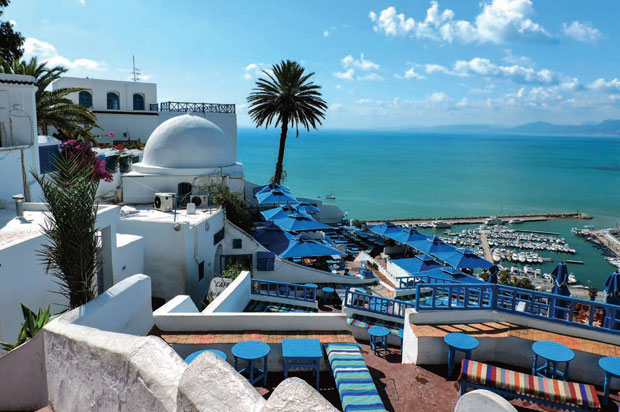

Comments (0)